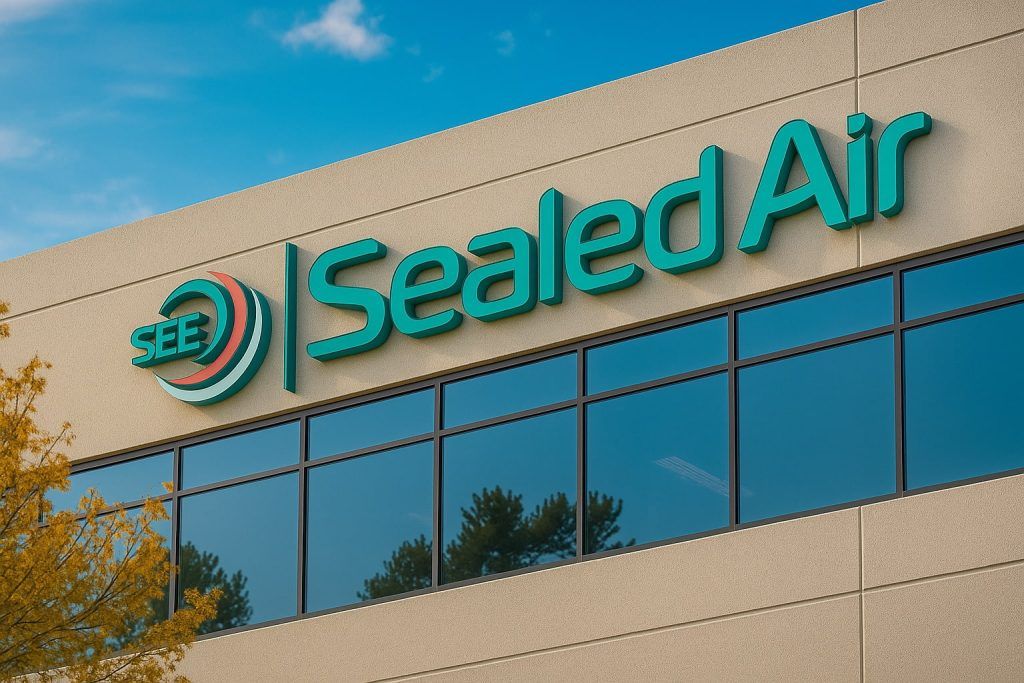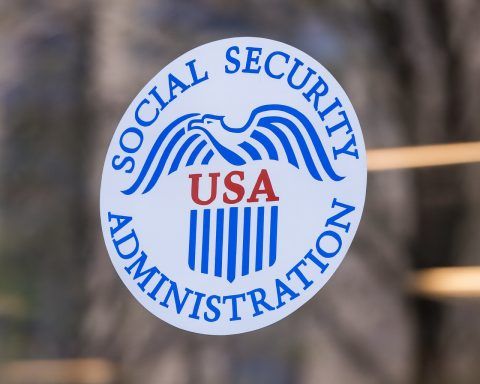On Thursday, November 13, 2025, the IRS released Notice 2025‑67, confirming the official contribution limits for tax‑advantaged retirement accounts in 2026. The headline change: workers will be allowed to defer up to $24,500 into 401(k)s and similar workplace plans next year—$1,000 more than in 2025—while the IRA limit increases to $7,500. [1]
The announcement immediately drew coverage from major outlets including MarketWatch, the Wall Street Journal, CNBC, and the Detroit Free Press, all highlighting that older savers get even more room via expanded “catch‑up” contributions and that high earners will face new Roth rules starting in 2026. [2]
Below is a breakdown of what changed for 2026, who benefits, and how to adjust your retirement strategy now.
2026 retirement contribution limits at a glance
According to IRS Notice 2025‑67, these are the key dollar limits that change on January 1, 2026: [3]
Workplace plans (401(k), 403(b), most 457 plans, federal Thrift Savings Plan)
- Employee elective deferral limit (under age 50)
- 2025: $23,500
- 2026: $24,500
- Standard catch‑up (age 50+)
- 2025: $7,500
- 2026: $8,000
- Total you can contribute at 50+ in 2026: $32,500 (24,500 + 8,000)
- “Super” catch‑up (ages 60–63)
- 2026: $11,250 (unchanged from 2025)
- Total possible at 60–63: $35,750 (24,500 + 11,250)
Traditional & Roth IRAs
- Base contribution limit
- 2025: $7,000
- 2026: $7,500
- Catch‑up (age 50+)
- 2025: $1,000
- 2026: $1,100
- Total possible at 50+: $8,600 (7,500 + 1,100) [4]
SIMPLE IRAs and SIMPLE 401(k)s
- Employee deferral limit
- 2025: $16,500
- 2026: $17,000
- Enhanced SIMPLE limit for certain small employers
- 2025: $17,600
- 2026: $18,100
- Standard SIMPLE catch‑up (50+)
- 2025: $3,500
- 2026: $4,000
- Special SIMPLE catch‑up (ages 60–63)
- 2026: $5,250 (unchanged) [5]
Overall defined contribution (DC) plan limit (employee + employer, not counting catch‑ups)
- 2025: $70,000
- 2026: $72,000 [6]
On top of those dollar amounts, the IRS also updated income thresholds for IRA deductibility, Roth IRA eligibility and the Saver’s Credit, which determine who can use key tax breaks. [7]
2026 401(k) contribution limits: $24,500 base, $8,000 catch‑up
For millions of workers, the most important number is the 401(k) elective deferral limit:
- New 2026 limit: $24,500
- Increase vs. 2025: +$1,000 [8]
If you’re under 50, that’s the maximum you can choose to have withheld from your pay into:
- a 401(k),
- a 403(b) for many nonprofits and schools,
- most governmental 457(b) plans, or
- the federal Thrift Savings Plan (TSP). [9]
To max out a 401(k) at $24,500 in 2026, you’d need to contribute roughly:
- About $2,040 per month (24,500 ÷ 12 ≈ 2,041.67), or
- Around $940 per paycheck if you’re paid bi‑weekly (≈ 26 pay periods).
Those are ballpark figures—your employer may have slightly different payroll schedules.
Bigger catch‑ups for workers 50 and older
If you’ll be age 50 or older in 2026, you get an additional $8,000 catch‑up on top of the $24,500 base limit:
- Total potential 401(k) deferral at 50+: $32,500. [10]
That extra room is specifically designed to help people who are closer to retirement and may need to accelerate their savings. MarketWatch, the Detroit Free Press and other outlets all highlighted this as one of the most impactful parts of today’s announcement for older workers. [11]
“Super catch‑up” stays at $11,250 for ages 60–63
The SECURE 2.0 Act created a special “super catch‑up” for people who are 60–63 years old, and the IRS left that number unchanged at $11,250 for 2026. [12]
That means:
- Ages 60–63 in 2026 can contribute up to $35,750 to a 401(k)/403(b)/most 457/TSP (24,500 + 11,250), assuming the plan allows the enhanced catch‑up. [13]
If your employer plan doesn’t yet support the higher 60–63 catch‑up, you’ll be limited to the standard $8,000 catch‑up instead.
High‑earner Roth catch‑up rule kicks in: new $150,000 wage threshold
Alongside the new limits, SECURE 2.0’s Roth catch‑up rule for high earners finally bites in 2026—and Notice 2025‑67 quietly raises the income line that triggers it. [14]
How the rule works
Starting with 2026 catch‑up contributions:
- If your 2025 Social Security wages from your current employer exceed $150,000,
- and you’re making catch‑up contributions to a 401(k), 403(b) or governmental 457(b),
- then your catch‑up must be made as Roth (after‑tax) contributions, not pre‑tax. [15]
Key details from the final regulations and the IRS notice:
- The threshold rises from $145,000 to $150,000 in 2025, and that wage figure is what determines whether your 2026 catch‑ups must be Roth. [16]
- The rule applies on an employer‑by‑employer basis: you might be a “high earner” for one plan but not another. [17]
- If your plan does not offer a Roth 401(k)/403(b)/457 option, high earners above the threshold won’t be allowed to make catch‑up contributions at all until the plan is updated. [18]
This is why retirement attorneys and plan consultants have been urging employers to add a Roth feature and update payroll systems before 2026, so older high‑income workers don’t suddenly lose access to catch‑ups. [19]
For workers below the wage threshold, nothing changes: you can still choose pre‑tax or Roth catch‑ups (if your plan allows Roth at all).
IRA contribution and income limits rise in 2026
The IRS also boosted how much you can put into Traditional and Roth IRAs next year. [20]
New IRA dollar limits
- Base IRA contribution limit (under 50)
- 2025: $7,000
- 2026: $7,500
- IRA catch‑up (age 50+)
- 2025: $1,000
- 2026: $1,100
So in 2026:
- Under 50: you can contribute up to $7,500 to a Traditional or Roth IRA (combined).
- 50 or older: you can contribute up to $8,600 (7,500 + 1,100). [21]
On a monthly basis, that works out to roughly:
- $625 per month to max a standard IRA in 2026.
- About $717 per month if you’re using the full 50+ catch‑up.
Higher income ranges for IRA deductions
If you (or your spouse) are covered by a workplace retirement plan, your ability to deduct Traditional IRA contributions is phased out over certain income ranges. For 2026, those ranges rise as follows: [22]
- Single or head of household, covered by a plan at work
- New 2026 phase‑out: $81,000 – $91,000 (up from $79,000 – $89,000 in 2025)
- Married filing jointly, contributing spouse covered at work
- 2026: $129,000 – $149,000 (up from $126,000 – $146,000)
- Married filing jointly, contributor not covered but spouse is
- 2026: $242,000 – $252,000 (up from $236,000 – $246,000)
- Married filing separately, covered by a plan
- Phase‑out range stays $0 – $10,000
If your income is above the top of those ranges, Traditional IRA contributions may still be allowed but not deductible—at which point many higher‑earnings households look at strategies like the backdoor Roth IRA. [23]
Roth IRA income limits move up, too
Direct Roth IRA contributions are also subject to income phase‑outs. For 2026, the IRS set these limits: [24]
- Single or head of household
- New 2026 Roth phase‑out: $153,000 – $168,000
- Married filing jointly or qualifying widow(er)
- New Roth phase‑out: $242,000 – $252,000
- Married filing separately
- Phase‑out range remains $0 – $10,000
Above those ranges, you can’t contribute directly to a Roth IRA, but indirect “backdoor” contributions remain possible under current law.
SIMPLE, SEP and small‑business retirement plans: more room in 2026
Small business owners and self‑employed professionals also see changes in 2026. [25]
SIMPLE IRAs and SIMPLE 401(k)s
From Notice 2025‑67: [26]
- SIMPLE employee deferral limit rises to $17,000 (from $16,500).
- Certain “enhanced” SIMPLE arrangements can go up to $18,100.
- The standard SIMPLE catch‑up for age 50+ climbs to $4,000 (up from $3,500).
- A separate catch‑up of $5,250 remains for ages 60–63 in qualifying SIMPLE plans.
This mirrors the pattern in 401(k) plans: slightly higher limits, with special boosts for savers in their early 60s.
SEP‑IRAs and overall DC contributions
For SEP‑IRAs and other employer‑funded DC plans, the key figure is the overall contribution cap under section 415(c):
- 2025: $70,000
- 2026: $72,000 (employee + employer, per employer, not including catch‑up). [27]
That increase primarily benefits high‑income business owners and professionals who are already maxing out their retirement plans.
Saver’s Credit: higher income limits for low‑ and moderate‑income savers
The Retirement Savings Contributions Credit (“Saver’s Credit”) gives low‑ and moderate‑income taxpayers a tax credit when they contribute to 401(k)s, IRAs and similar plans. In 2026, more people will qualify thanks to higher adjusted gross income (AGI) limits. [28]
Under Notice 2025‑67 and IRS guidance:
- Married filing jointly
- You can receive some Saver’s Credit until AGI reaches $80,500.
- Head of household
- Some credit available until $60,375.
- Single or married filing separately
- Some credit available until $40,250.
Within those caps, there are tiers at which the credit equals 50%, 20% or 10% of your qualifying contributions; below the highest tier, the rate gradually drops before disappearing above the top limits. [29]
For lower‑income workers, that means adding even small amounts to a 401(k) or IRA in 2026 could trigger a direct tax credit, effectively boosting your return on every dollar contributed.
What this means for your 2026 retirement strategy
Here’s how to turn today’s IRS announcement into an actionable plan.
1. Update 2026 contribution goals now
If you like to max out your retirement accounts:
- Adjust your 2026 payroll elections so total 401(k) deferrals hit $24,500 (or $32,500 / $35,750 if you qualify for catch‑ups). [30]
- Plan to contribute $7,500 (or $8,600 at 50+) to IRAs across the year—either via automatic monthly transfers or a lump sum. [31]
If you’re not ready to max everything, use the new numbers as targets to gradually work toward.
2. If you’re a high earner over 50, talk to HR about Roth
Because of the new Roth catch‑up rule at the $150,000 wage threshold, workers who earn more in 2025 and plan to use catch‑ups in 2026 should: [32]
- Confirm whether your employer plan offers a Roth 401(k)/403(b)/457.
- Ask HR or the plan administrator how catch‑ups will be handled starting in 2026.
- Make sure payroll systems are ready to separate pre‑tax and Roth catch‑ups correctly.
If your plan doesn’t yet have a Roth option, you and your colleagues may want to push for an update, or you risk losing the ability to make catch‑up contributions at all.
3. Revisit Roth vs. pre‑tax decisions
With higher limits and Roth catch‑up rules, it’s a good moment to revisit where you want to take your tax break:
- Pre‑tax (traditional) lowers your taxable income today but leads to taxable withdrawals later.
- Roth contributions hurt more upfront (no deduction), but withdrawals in retirement can be tax‑free and may help you manage future tax brackets and Medicare surcharges. [33]
The right mix depends on your current and expected future tax rates, your other income sources, and your time horizon.
4. Make the most of the new IRA and Saver’s Credit thresholds
If your income has kept you just below prior phase‑out ranges, the higher thresholds may allow for:
- A fully deductible Traditional IRA where you previously only got a partial deduction.
- Direct Roth IRA contributions instead of going through a backdoor strategy.
- New eligibility for the Saver’s Credit, especially if you’re on the margin between tiers. [34]
Check your expected 2026 AGI (or run projections with a tax professional or software) to see which bucket you’re likely to fall into.
5. For business owners: coordinate 401(k), SEP and SIMPLE design
Small‑business owners and self‑employed professionals should coordinate:
- Employee deferral limits (24,500 / 32,500 / 35,750)
- The overall DC cap of $72,000
- Whether a SIMPLE, SEP, or traditional 401(k) structure makes the most sense for 2026. [35]
You’ll also need to ensure your plan documents and payroll systems reflect the Roth catch‑up requirement and new limits before the start of the 2026 plan year. [36]
Bottom line
The IRS’s 2026 cost‑of‑living adjustments give savers:
- More room to contribute—especially in 401(k)s and IRAs.
- Bigger catch‑ups for those 50+ and especially ages 60–63.
- Higher income thresholds that expand access to deductions, Roth contributions, and the Saver’s Credit.
- New complexity for high earners, who may have to shift catch‑ups into Roth accounts to keep using them. [37]
For individual savers, the next step is simple: update your 2026 contribution settings, confirm how your plan will handle Roth catch‑ups, and align your savings plan with the new limits. As always, consider talking with a qualified tax or financial advisor to tailor these changes to your specific situation.
References
1. www.irs.gov, 2. www.marketwatch.com, 3. www.irs.gov, 4. www.irs.gov, 5. www.irs.gov, 6. www.irs.gov, 7. www.irs.gov, 8. www.irs.gov, 9. www.irs.gov, 10. www.irs.gov, 11. www.marketwatch.com, 12. www.irs.gov, 13. www.irs.gov, 14. www.irs.gov, 15. www.irs.gov, 16. www.irs.gov, 17. www.bakerdonelson.com, 18. www.bakerdonelson.com, 19. www.bakerdonelson.com, 20. www.irs.gov, 21. www.irs.gov, 22. www.irs.gov, 23. www.whitecoatinvestor.com, 24. www.irs.gov, 25. www.irs.gov, 26. www.irs.gov, 27. www.irs.gov, 28. www.irs.gov, 29. www.irs.gov, 30. www.irs.gov, 31. www.irs.gov, 32. www.irs.gov, 33. www.wsj.com, 34. www.irs.gov, 35. www.irs.gov, 36. www.bakerdonelson.com, 37. www.irs.gov










